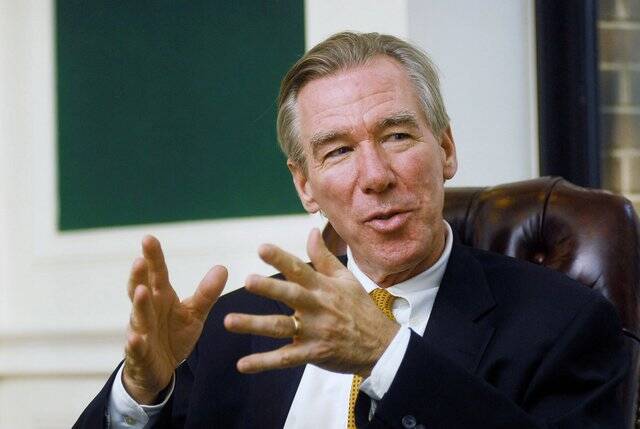This is part one of a three-part series on Catholic colleges and universities led today by lay leaders after a history of priests or women religious at their helms. Read Part 1 on Trinity University Washington here.
John Garvey, The Catholic University of America
1. As a layperson, did you meet any particular challenges in being accepted as president of your university? By religious communities? By local bishop? By local community? By alumni? By faculty? By student body? By other college presidents, both Catholic and non-denominational ones? How did you deal with them?
I haven’t had any trouble being accepted as president. There are, though, certain things that my predecessor, Father David O’Connell, now Bishop of Trenton, New Jersey, was able to do better than I by virtue of being a priest. He could preside over university Masses. He could speak with more authority on some religious issues. He was a better advisor and mentor to young men considering a vocation to the priesthood. And I suspect that leading the community, or groups of it, in prayer came more naturally to him.
2. Have you taken any particular steps to emphasize the Catholicity of your educational institution? Did you need to do anything to make up for not wearing a Roman collar or symbol of a religious order?
I have taken a number. I speak frequently within the university about its Catholic character. I stress to the provost, deans, department chairs and faculty the essential importance of hiring onto the faculty a majority of Catholics committed to the witness of the faith. (That is the phrase "Ex corde ecclesiae" uses.) I have initiated litigation to resist a federal requirement that we provide contraceptives and abortifacients to our employees and students in violation of Catholic teaching. I write and speak frequently on issues of religious freedom and its importance for Catholic universities. I have begun an effort to have priests and religious women living in the residence halls alongside the students.
3. Can you give any examples of times when being a CATHOLIC institution has stood out for you, i.e. made a difference in the educational community?
Our intellectual life is distinctively different precisely because we are Catholic. I don’t just mean that we teach theology and philosophy. The way people think about art, music, history, architecture, law and business is different because we are Catholic. Equally important, our students’ lives are different because we are a Catholic institution.
4. What percentage of your student body is Catholic? What percentage of your faculty is Catholic?
Students: the undergraduate student body is about 90 percent Catholic. The graduate schools perhaps 60 percent. The faculty is 52.3 percent Catholic.
5. Are you personally involved in the pastoral/spiritual dimensions of your university?
My wife and I attend Mass daily with the students. I speak at many of the student Masses and all of the university Masses. We attend retreats with the students. We work closely with Campus Ministry. We host lunches and dinners for the men and women considering vocations to the religious life.
6. How do you represent (defend) specifically Catholic points of view to students and faculty who do not share those points of view? Do you find you are expected to be more “flexible” than clerics or members of religious communities?
I don’t have any trouble doing this. I sometimes find it easier than my predecessors might have to take certain steps because I am a layman. For example, moving back to single-sex dorms was something I could comfortably promote because I had sent five children to college.
7. Do you foresee your college continuing with a lay president in the future?
If you mean, have we moved in that direction and are we likely not to turn back, no. I think there is a lot to be said to have a priest leading the national university of the Catholic Church.
8. Has your experience led you to any conclusions about the advantages/disadvantages of clerical vs. lay leadership?
I don’t think it’s “clerical vs. lay.” I think they both have unique gifts.
9. How has application of norms based on "Ex corde," the Vatican document on maintaining Catholic identity, gone for you?
Since I became president, 59 percent of our faculty hires have been Catholics committed to the witness of the faith. All of our faculty in Theology, Philosophy and Canon Law receive a mandate (or mission canonica, or venia docendi) from the archbishop of Washington.








